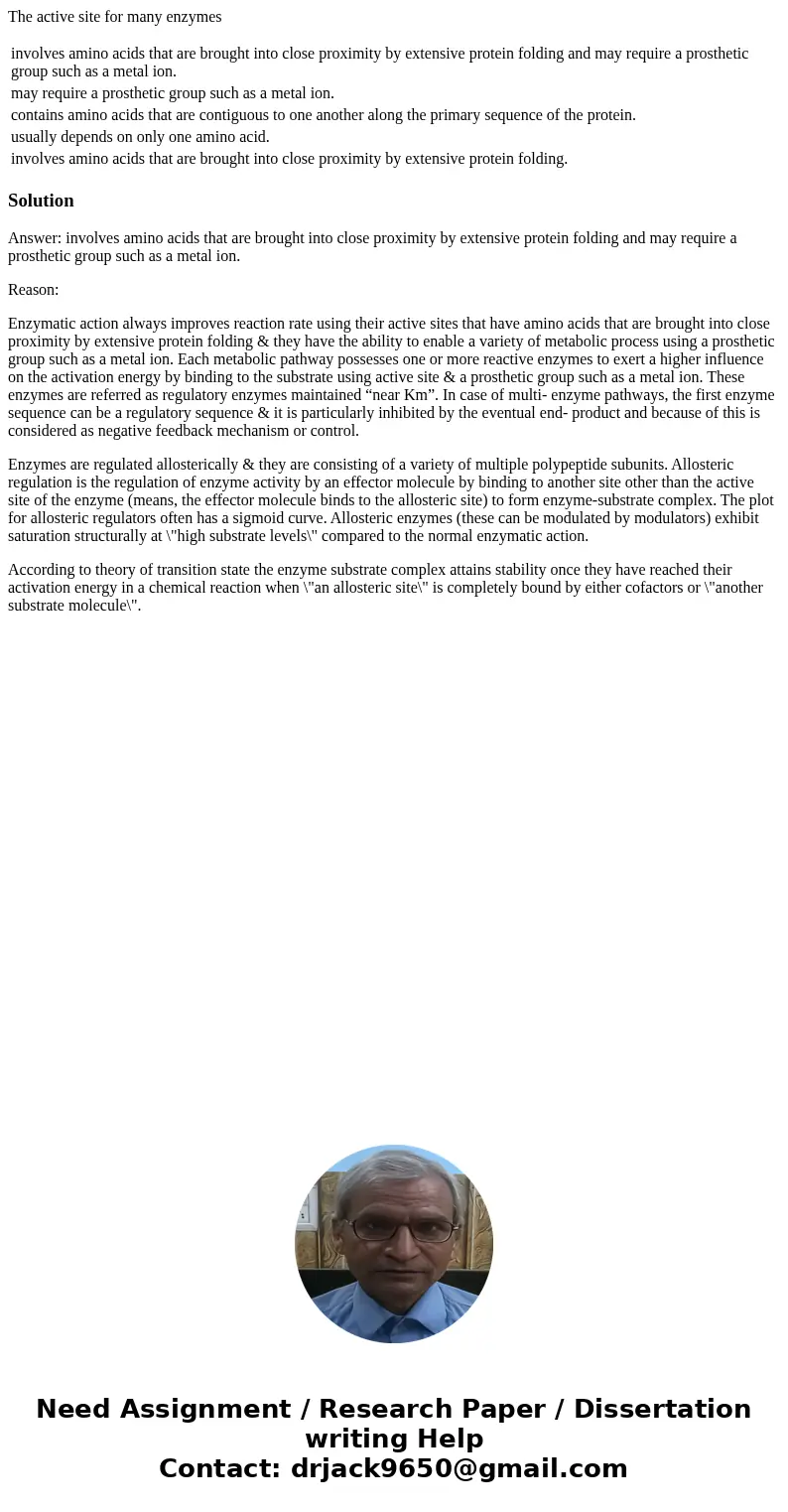The active site for many enzymes involves amino acids that a
The active site for many enzymes
| involves amino acids that are brought into close proximity by extensive protein folding and may require a prosthetic group such as a metal ion. |
| may require a prosthetic group such as a metal ion. |
| contains amino acids that are contiguous to one another along the primary sequence of the protein. |
| usually depends on only one amino acid. |
| involves amino acids that are brought into close proximity by extensive protein folding. |
Solution
Answer: involves amino acids that are brought into close proximity by extensive protein folding and may require a prosthetic group such as a metal ion.
Reason:
Enzymatic action always improves reaction rate using their active sites that have amino acids that are brought into close proximity by extensive protein folding & they have the ability to enable a variety of metabolic process using a prosthetic group such as a metal ion. Each metabolic pathway possesses one or more reactive enzymes to exert a higher influence on the activation energy by binding to the substrate using active site & a prosthetic group such as a metal ion. These enzymes are referred as regulatory enzymes maintained “near Km”. In case of multi- enzyme pathways, the first enzyme sequence can be a regulatory sequence & it is particularly inhibited by the eventual end- product and because of this is considered as negative feedback mechanism or control.
Enzymes are regulated allosterically & they are consisting of a variety of multiple polypeptide subunits. Allosteric regulation is the regulation of enzyme activity by an effector molecule by binding to another site other than the active site of the enzyme (means, the effector molecule binds to the allosteric site) to form enzyme-substrate complex. The plot for allosteric regulators often has a sigmoid curve. Allosteric enzymes (these can be modulated by modulators) exhibit saturation structurally at \"high substrate levels\" compared to the normal enzymatic action.
According to theory of transition state the enzyme substrate complex attains stability once they have reached their activation energy in a chemical reaction when \"an allosteric site\" is completely bound by either cofactors or \"another substrate molecule\".

 Homework Sourse
Homework Sourse